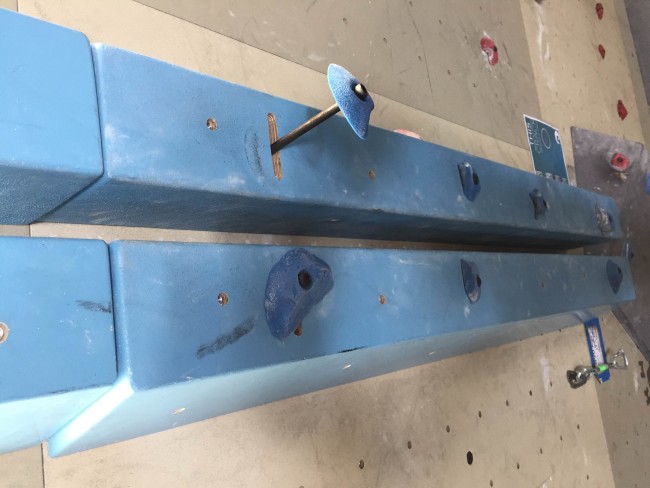The EVO Crack from Evo Rock & Fitness Portland on Vimeo.
Adjustable cracks, that is hand cracks that can be changed by the customer with a push of the button have been a dream for gym operators and climbers for years. But the mechanics behind taking a crack sized for fingers and expanding it to fist size have not been invented…yet.
So one enterprising gym owner decided to make his own. Michael Lambert, Owner of Evo Rock in Portland, Maine loves crack climbing and wanted to share his passion with his members. But during the design phase of the gym which opened earlier this spring, he was talked out of it by Cort Gariepy, former CEO of Rockwerx and current head of business development for Evo Rock. Gariepy told Lambert, “That in his experience, cracks have limited utility once members climb them a few times. They also can’t be cleaned very effectively, which is, shall we say, important.”
Lambert is an experienced craftsman and had already made prototype modular volumes that when placed next to each other formed a crack. So for him it was easy to let go of the idea of permanent built-in cracks in his gym.
“My prototype crack volumes had a mounting plate with horizontal ovular holes for finding randomly placed t-nuts,” Lambert said. Because of the randomness of t-nuts in commercial climbing walls he found the mounting system and adjustability to be less than desirable.

“However, with a speed wall, the spacing is standardized, so suddenly the design could be greatly simplified. Now it’s easy to adjust it, or to open it up to install holds in the crack itself to create constrictions,” he said.
Although not customer adjustable the crack volumes have become quite useful and popular with members. A unique aspect of the crack volume system is the ability to take small sections down to the bouldering area and offer hands-on training. Lambert did just that, “in the form of three boulder problems of different crack sizes,” he said. “I hosted a clinic where folks could try them out while I stood next to them offering feedback.”
Lambert said, “If somebody wants to be the best climber they can, they should try different things. With this system, we can throw anything we want at them.”

Climbing Business Journal is an independent news outlet dedicated to covering the indoor climbing industry. Here you will find the latest coverage of climbing industry news, gym developments, industry best practices, risk management, climbing competitions, youth coaching and routesetting. Have an article idea? CBJ loves to hear from readers like you!






